03 October, 2024
Windows
Smart homes, the Internet of Things, and autonomous intelligent systems are no longer just a vision of the future. They are increasingly becoming standard or at least an option when choosing window systems for our homes. Smart window systems have been around for some time, but only now are we beginning to fully appreciate their brilliance. What smart solutions—both contemporary and those that came before—can be useful to us?
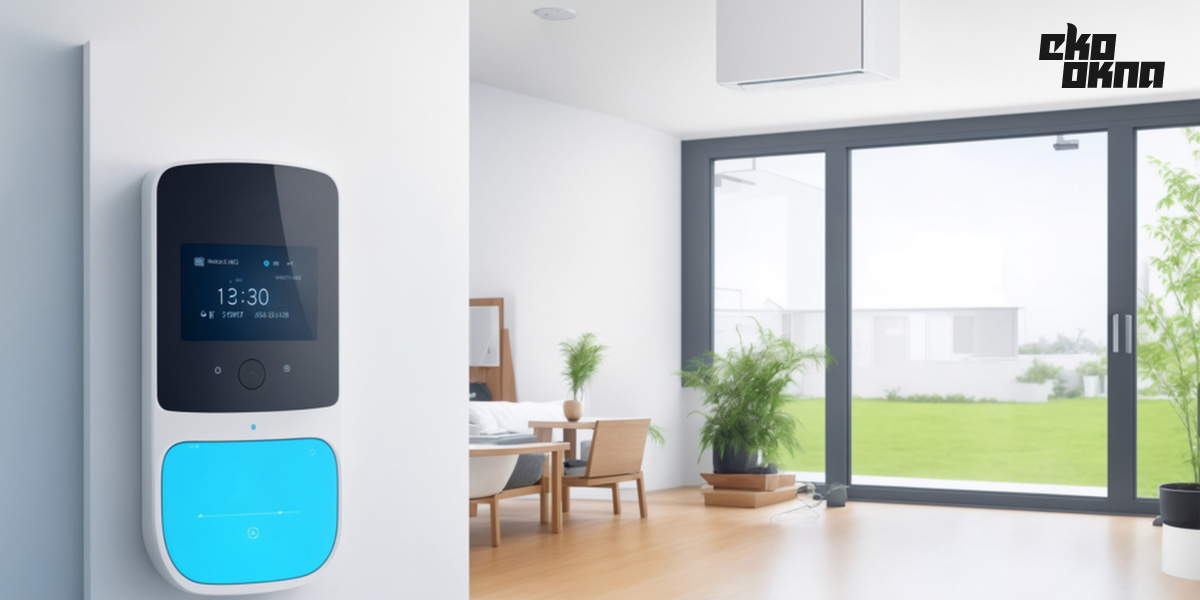
Smart windows are most commonly associated with smart home systems that allow users to manage various functions of devices via a smartphone. With them, we can turn lights on and off, control air conditioning, open the garage door, or unlock the gate at the entrance.
The smart control systems and the elements they manage are crucial, and this text will largely focus on them. However, before we delve into the most advanced solutions, let’s look for intelligence in places where we have become so accustomed to it that we no longer notice it.
Hidden intelligence can be found in:
Let’s start by examining these extraordinary "ordinary" items.

The intelligence of glass can take various forms, but three aspects seem particularly significant:
Glass in our windows has long ceased to be merely boring sheets of glass. It is now combined in much less obvious ways.
Innovative window systems today are equipped with equally modern glass. Often, these are not single panes but units that offer more possibilities. Starting with the glass itself, we can have:
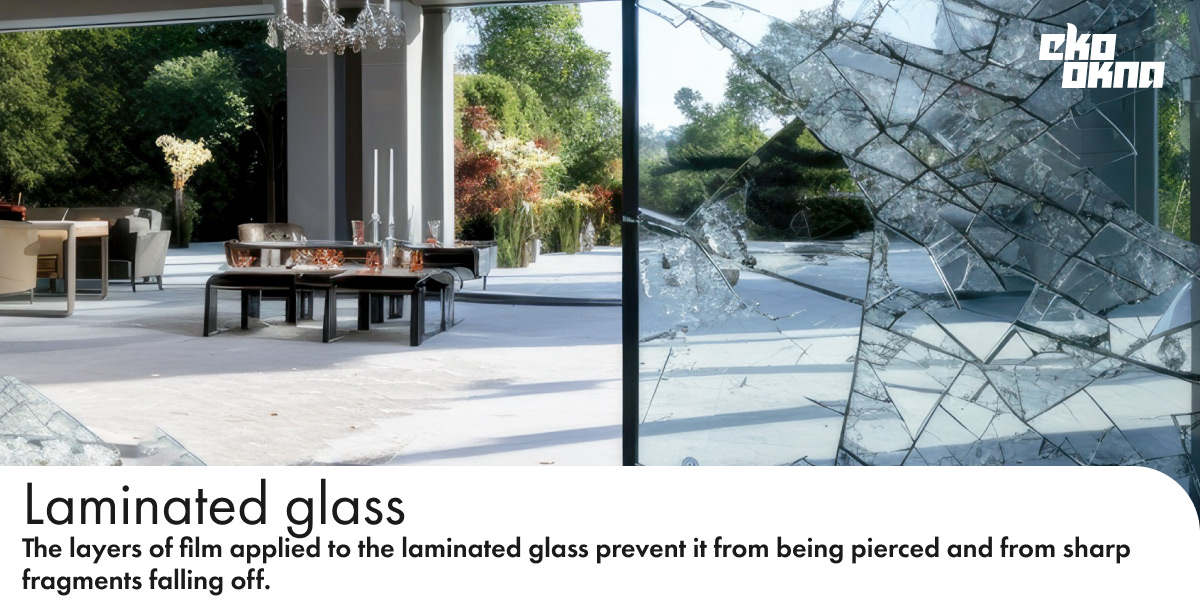
These are just a few examples among countless possibilities. Thanks to modern technologies, we can achieve even more, such as switchable transparent glass, known as Digi Glass. By connecting such glass to a low-voltage power supply and controller, it is possible to change its transparency at the press of a button – from frosted to clear and back again. This is an ideal solution for conference rooms, bathrooms, offices, and places where we want to combat excessive sunlight.
Today, nearly all types of window systems, especially warm ones, are equipped with double or triple glazing units. These consist of at least two panes of glass connected by a spacer frame. The selection of window systems often starts with the type of glazing unit that can be used in a particular solution.
With a glazing unit, many intelligent features can be introduced, such as:
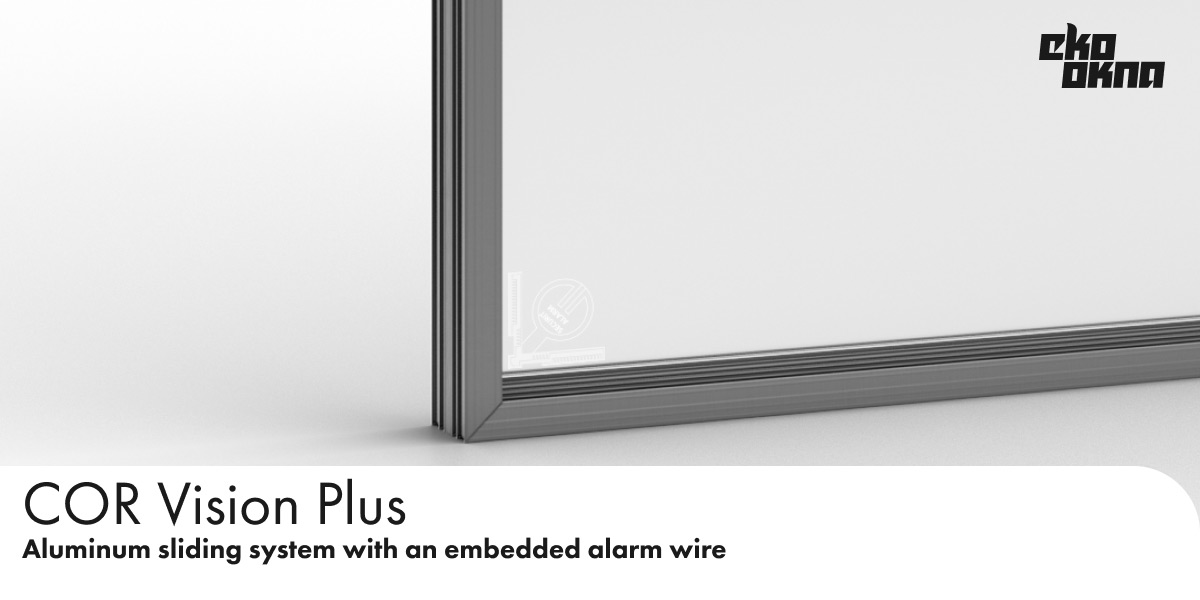
These are just examples, and it's worth noting that the previously described glass features can be freely combined in various ways, allowing for the creation of glazing units with multiple different properties at once.
Window fittings are the metal components of windows that enable them to open and close. They are primarily operated by a handle, but increasingly, window automation is being used, featuring tilt-and-turn drives that can independently open and close the window.
Simple window fittings can do a lot these days. They offer, among other things, the ability to:
In some cases, different opening methods and additional functions can be available simultaneously, but sometimes one system may exclude another.
Micro-ventilation allows for airing a room without fully opening the window. Locking with a key or button serves as a deterrent against theft and a safety measure for small children. These functions can be combined, but micro-ventilation does not work with guillotine windows.
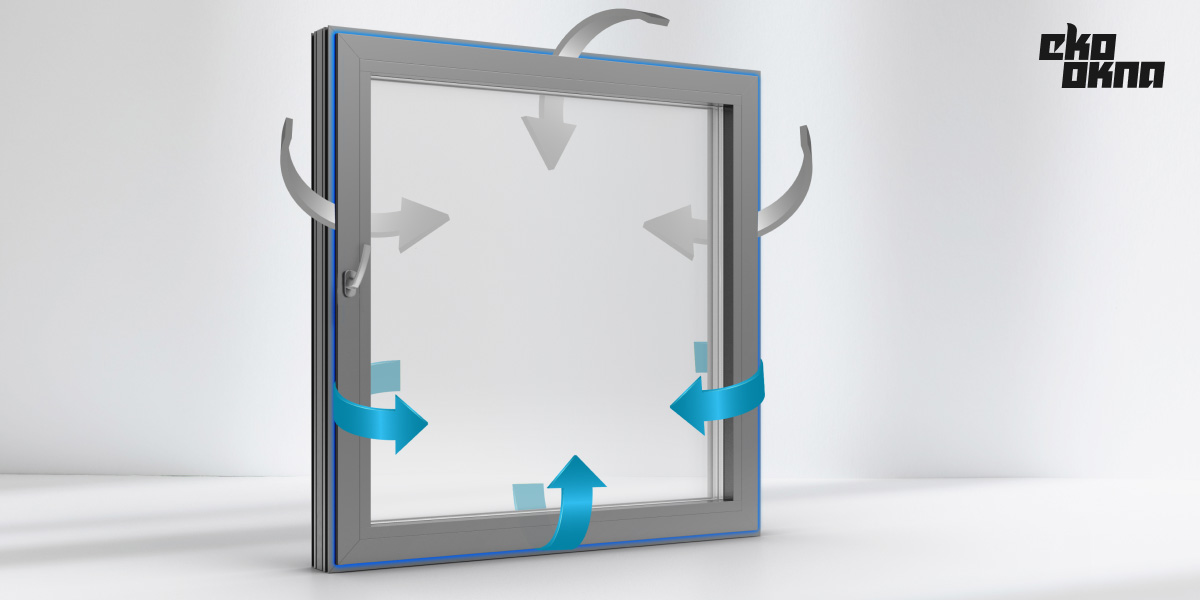
Interesting fittings allow for easy adjustment of the sash pressure against the frame. This enables users to switch windows from a "summer" mode to a "winter" mode. In winter, it’s important for the window to be more airtight, while in summer, good ventilation is crucial.
Fittings may also feature a window opening sensor, such as the IntelliTAG® air io from Somfy. In addition to informing about the window's position, it can detect vibrations, which may indicate attempted break-ins. What can be done with such information? We'll find out shortly.
When the ventilation system in a building is insufficient, and opening windows is not a feasible solution, air inlets are an excellent alternative. Even the simplest models can be tilted, creating an additional opening in the window to allow extra air in. However, we can, and should, expect more.
In practice, there are two autonomously operating solutions:
Their method of operation is similar: when the indoor air becomes too humid or when the pressure difference between the inside and outside is too great (usually related to overheating), the air inlet will automatically help improve indoor air quality.
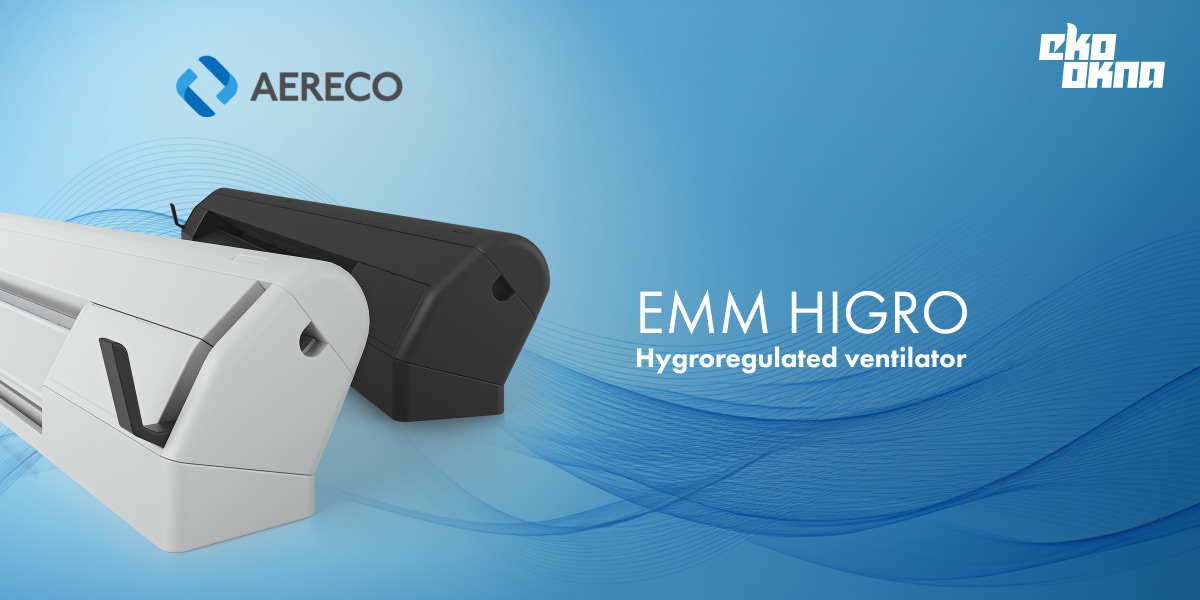
Such solutions are very practical because they not only operate automatically based on simple and reliable physical principles, but they also come with filters to catch insects and pollutants. Higher-end options are also adequately insulated.
Window coverings are usually the first form of building automation to appear in homes, offices, and public buildings. Controlling window shades prompts us to seek similar convenience in other areas of property use, not just within the building itself. This allows us to integrate smart home systems that manage heating or access control systems, such as facial recognition at doors or gates. However, we'll discuss those topics another time. Today, we’ll focus on window automation.
Window covering systems can vary greatly. The most commonly used types include:
Each of these solutions can be operated manually, and for internal blinds or shutters, this is still the most common method. However, for facade systems, we’re increasingly turning to drives controlled by wall switches or remote controls, as well as smart home systems.
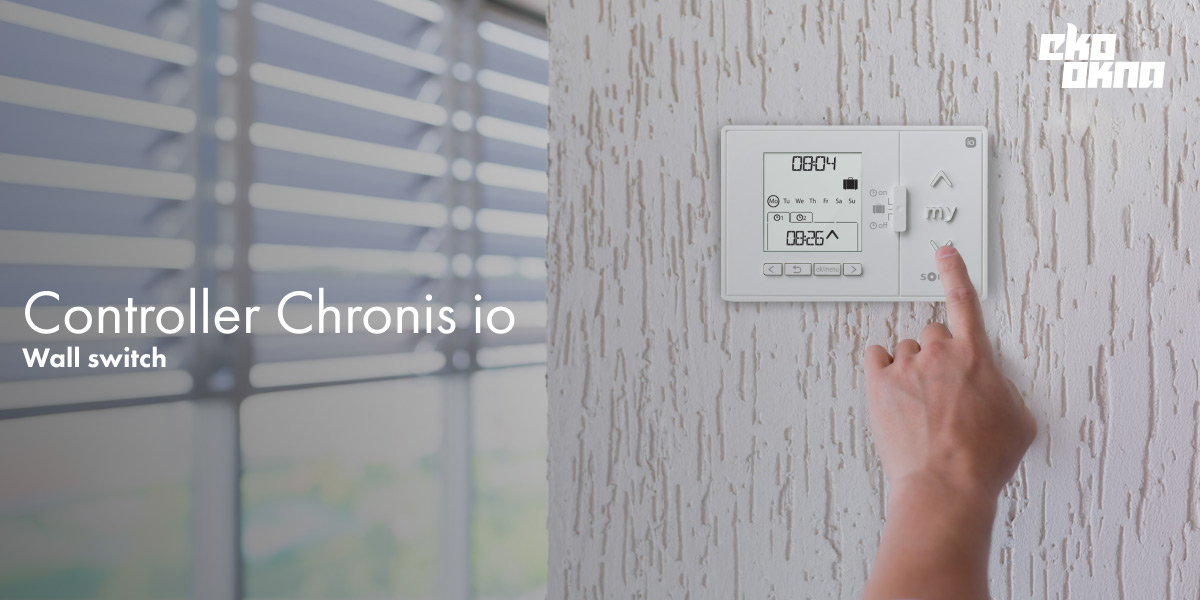
Intelligent window coverings typically require some assistance to become truly smart. Basic solutions usually include three accessories that enhance their functionality:
Wind sensors are particularly useful for owners of facade blinds and screen shades. They help protect the window covering systems from damage caused by strong gusts of wind, which is especially important if we forget about them.
Temperature sensors pave the way for more advanced tasks. When the temperature rises, they send a signal to the drive to lower the shade, and when the temperature drops, they can raise the shade.
In the case of weather stations, we usually have both functionalities combined, and often we can also set automatic responses to other factors, such as the intensity of sunlight.
The installation of automation traditionally requires bringing power to devices, which can be troublesome. A simple window opening sensor may operate on batteries, but a drive for a facade blind requires power. In such cases, photovoltaic panels come to the rescue.

Window control systems that utilise a solar panel can operate without needing to be plugged into an electrical outlet. The product features a built-in battery that allows for several operating cycles between charges, meaning it works not only on sunny days. It’s also important to note that the amount of energy needed is minimal, so the solar battery can be small, and placing it on a north-facing wall often suffices, provided there is no additional shading.
An interesting idea is also to integrate photovoltaic cells within the glazing, which further reduces the demand for grid energy. Unfortunately, such window systems are rarely encountered due to their low efficiency and several other challenges that currently deter their adoption.
For window control to be seamless, a complete smart home system based on a central hub is necessary. While solutions using Wi-Fi connections are possible, they tend to be less convenient due to their complexity and reliability issues. Devices like the TaHoma switch, which operate on radio protocols, are far superior.
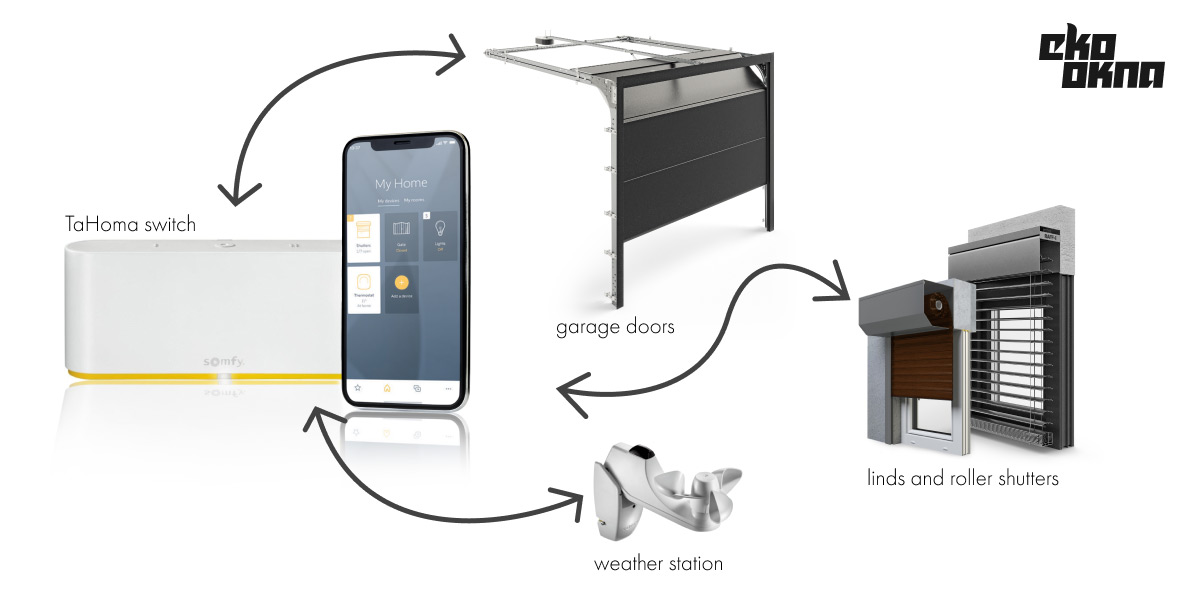
TaHoma not only allows you to issue commands to all connected devices from the device itself or a smartphone app but also coordinates the operation of various window components and their coverings. This enables tasks to be executed automatically based on a planned scenario or in response to received stimuli.
What might these scenarios be? That depends on our creativity and the effect we want to achieve.
Before anyone thought of remotely controlling windows or window coverings, the first windows that could inform users about being improperly opened or damaged were already in use. Such alarm systems have been with us for decades and are currently evolving rapidly.
Traditional solutions used contact sensors, which remain very popular. Their purpose is to trigger an alarm when a window is opened while it should be closed.
A more modern option employs the IntelliTAG® air io sensor, which we mentioned earlier. Installed near the fittings, it sends signals about the window's position and also detects vibrations that may indicate a break-in attempt.
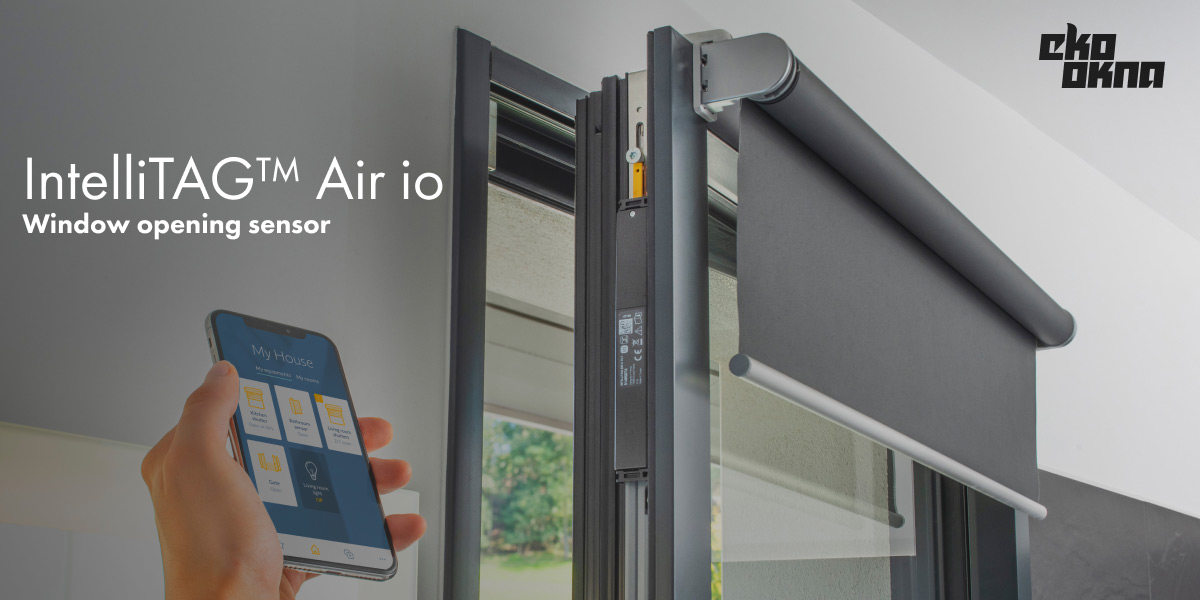
Alarm Sensors Offer Great Possibilities
Significant convenience can be achieved relatively easily with automated window coverings. Typical window automation, which operates with standard remotes, becomes a powerful life simplifier when integrated into a smart home system. How does it help us?
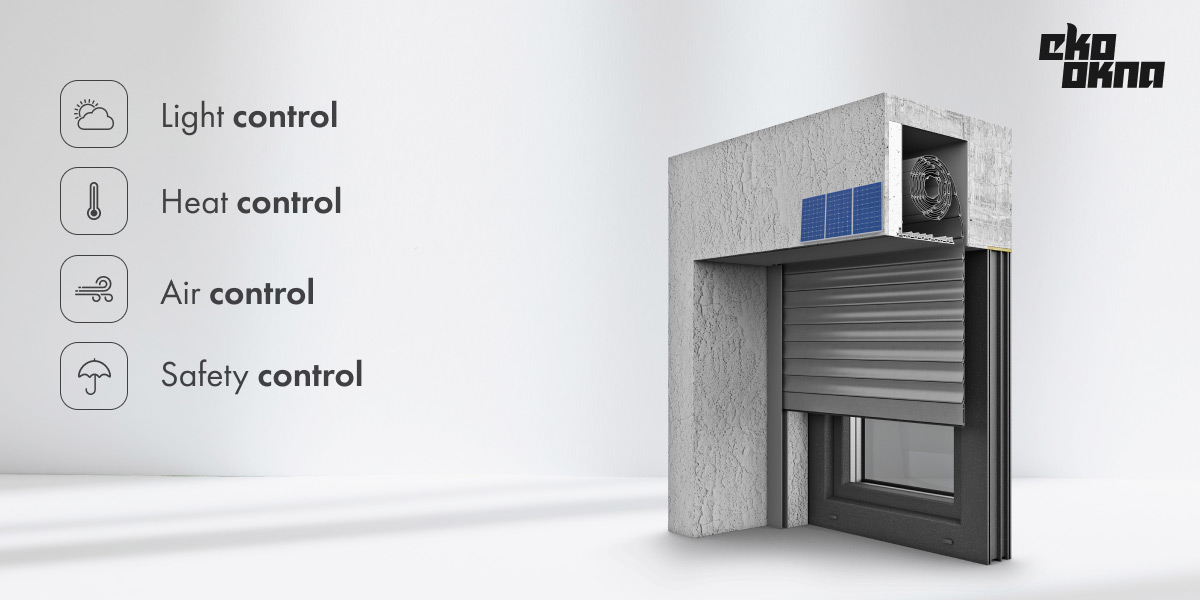
Light Control
Users most frequently automate light control, which is very straightforward. You can simply set a wake-up time so that the blinds, which automatically close in the evening, open at a specified time in the morning. Want to wake up to music? Of course, just connect a speaker to the system.
Heat Control
Returning to a hot house after work in the middle of summer can be a real nightmare. However, window automation can easily handle this. All it takes are window coverings and a weather station with an additional internal temperature sensor. When it gets warm and the sun shines intensely, exterior blinds or shades automatically lower. When the sun hides behind clouds and the interior becomes stuffy, the coverings lift, and the windows tilt open, providing a pleasant cool breeze and fresh air.
Air Quality Control
Has the indoor space accumulated too much carbon dioxide? If we have the appropriate sensor to detect it, smart window coverings, along with windows equipped with the right drives, can immediately ensure rapid air exchange.
Access Control
If the indoor space has too much carbon dioxide, the right sensor can detect it. In this case, smart window coverings, along with windows equipped with the appropriate drives, can instantly facilitate quick air exchange to ensure safe conditions.
Our control can be truly precise. This is aided by the slats of exterior blinds, which can be adjusted to nearly any angle. This allows for the sunlight to be diffused in such a way that most of the heat remains outside while the rooms are still pleasantly illuminated. The smart system can track the sun's position and adjust the slats to always maintain the optimal angle.
We already know what options window automation and innovative window systems can offer. However, we need to return to the question posed in the title: how do smart window systems change our homes?
They provide three key benefits: comfort, peace of mind, and security.
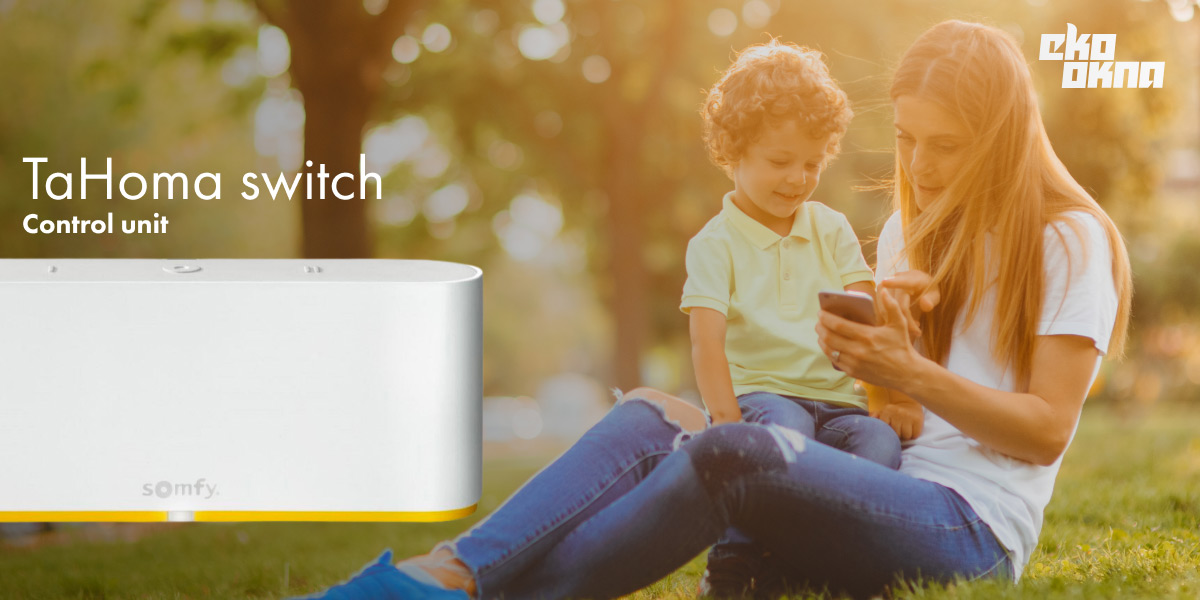
Comfort arises from the automatic adjustment of indoor conditions, even when we forget to make those adjustments ourselves. Automation responds to changing weather and the time of day, gently waking us with soft sunlight in the morning and protecting us from nighttime noise.
Peace of mind comes from the assurance that everything is always in order. Window automation regularly informs us whether doors are locked or if windows were left ajar after we leave for work. When the wind starts to blow, window coverings automatically raise. If someone knocks on a window, we receive a notification through our mobile app.
Security is guaranteed by constant access to information and the ability to respond. When we’re not home, window coverings protect the building, and attempts to breach doors or windows trigger immediate alarm activation. An advanced system provides protection against intruders, fire, carbon dioxide, and even excessive sunlight.
Building automation and smart windows represent a future that is already upon us but is just beginning to take shape. Existing solutions will become more widespread, and in the coming years, we can expect three main areas of development:
Increasing Integration with IoT. The Internet of Things (IoT) is a concept that envisions transforming all elements of our homes into smart devices and connecting them in a single wireless network. Controlling windows in this approach will require nothing more than a typical Wi-Fi router, which is already standard in most homes. This is not so much a revolution as an expansion of smart solutions into all areas of life—from small gadgets to large appliances and building elements.

Photovoltaic Glass. Photovoltaic glass symbolizes the pursuit of harnessing energy from renewable sources whenever possible. While we can install traditional solar panels on walls, we need something different for windows. Unfortunately, currently available transparent photovoltaics are either inefficient, negatively affect window properties, or don’t offer an adequate level of transparency—often encountering multiple issues at once. However, the intensity of research suggests that we can soon expect changes in this area.
Windows with Displays. The most promising of these innovations are displays integrated into windows. These can be placed both on the glass and within the window profiles. Currently, changing the appearance of a window usually requires replacement. However, in the future, it may be possible to change the color or texture of the displayed image. Today, we can already display the weather forecast on glass, but this solution remains relatively uncommon.
Smart window systems are already transforming our homes and will continue to do so increasingly. Smart homes are becoming the standard, and intelligent control systems are appearing more frequently each year. In the near future, smart solutions—both in windows and homes in general—will certainly be a recurring topic on our blog.

Hotline: +48 32 459 15 00 Contact for new business customers only. Connection fee in accordance with the operator`s price list.
E-mail: quoteuk@ekookna.com newclientuk@ekookna.com Contact for business customers only.
Eko-Okna S.A.
Kornice, ul. Spacerowa 4
47-480 Pietrowice Wielkie
NIP: 6391813241
KRS: 0000586067